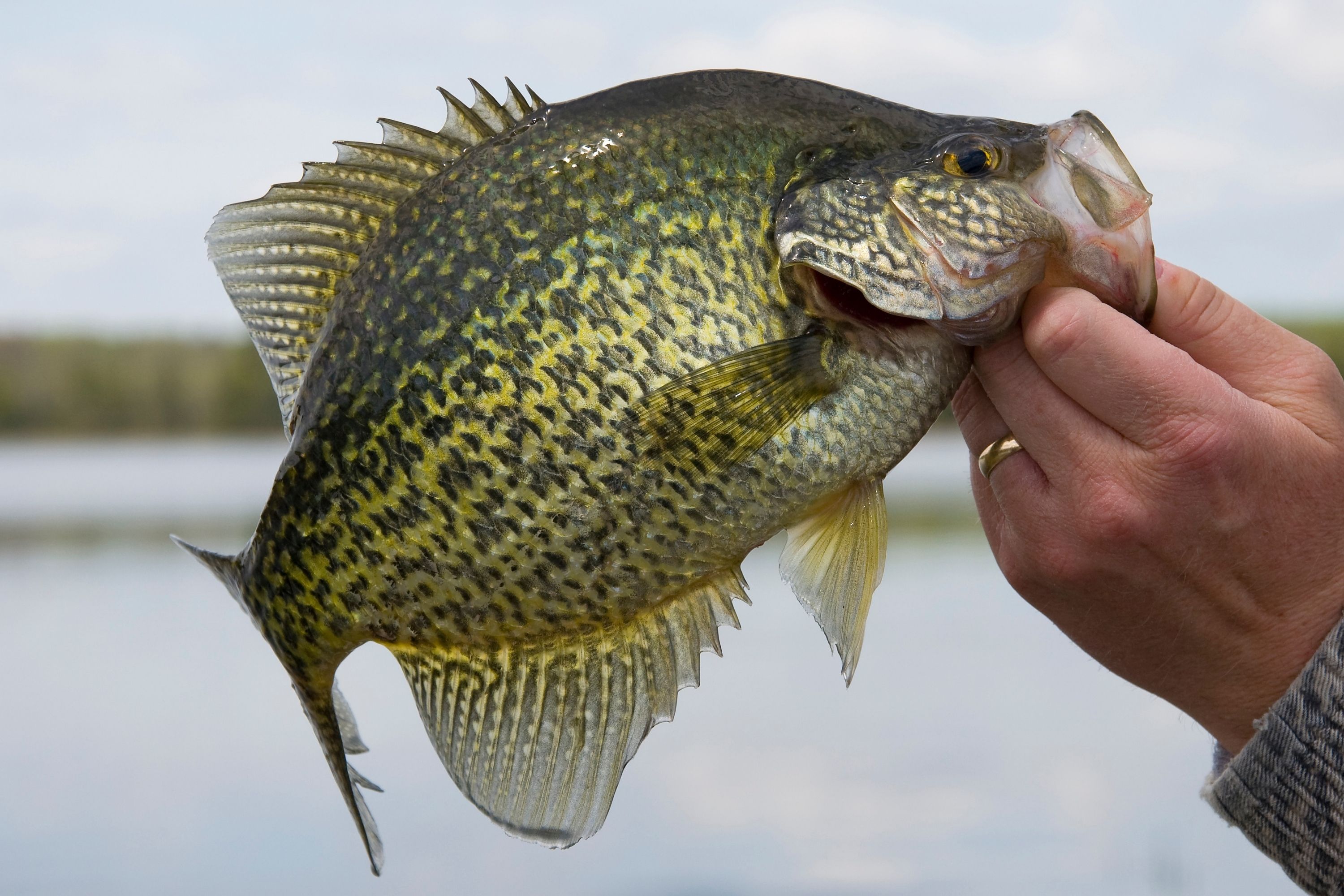Black crappie
(Pomoxis nigromaculatus)

Description
The black crappie (Pomoxis nigromaculatus) is a freshwater fish found in North America, one of the two crappies. It is very similar to the white crappie in size, shape, and habits, except that it is darker, with a pattern of black spots. Pomoxis, the genus name, is Greek: "poma, -atos" and "oxys" meaning sharp operculum. This references the fish's spined gill covers. The species name, nigromaculatus, is derived from Latin and means "black-spotted". Black crappies are most accurately identified by the seven or eight spines on its dorsal fin (white crappies have five or six dorsal spines). Crappies have a deep and laterally compressed body. They are usually silvery-gray to green in color and show irregular or mottled black splotches over the entire body. Black crappies have rows of dark spots on their dorsal, anal, and caudal fins. The dorsal and anal fins resemble each other in shape. Both crappies have large mouths extending to below the eye, and thin lips both suggestive of their piscivorous feeding habits. Crappies are typically about 4-8 inches (10-20 cm) long. The current all-tackle fishing world record for a black crappie is 2.47 kg (5 lb 7 oz). The maximum length reported for a black crappie is 19.3 inches (49 cm) and the maximum published weight is just under 6 pounds (2,700 g). The black crappie's range is uncertain, since it has been widely transplanted, but it is presumed to be similar to the white crappie's. Its native range is suspected to be in the eastern United States and Canada, and as of 2005, populations existed in all of the 48 contiguous U.S. states. Introduced populations also exist in Mexico and Panama. The black crappie's habitats are lakes, reservoirs, borrow pits, and navigation pools in large rivers. They prefer areas with little or no current, clear water, and abundant cover such as submerged timber or aquatic vegetation, as well as sand or mud bottoms like those found in lakes, ponds, streams, and sloughs. Like P. annularis, P. nigromaculatus is very prolific and can tend to overpopulate its environment, with negative consequences both for the crappie and for other fish species. A commercial supplier of the fish, however, claims that it can be safely stocked in ponds as small as one acre (0.40 hectares) in area. Crappies feed early in the morning and from about midnight until approximately 2 am.
Taxonomic tree:







